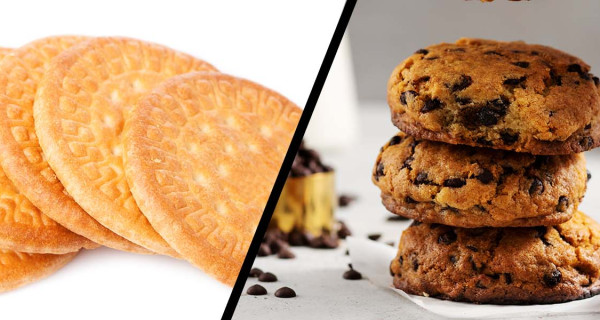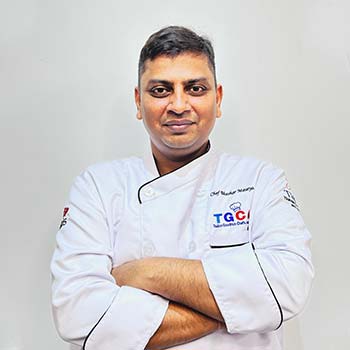

What you call a biscuit in Delhi might be a cookie in New York! Not only is this an amusing fact, but it also opens the door to a vast world of culinary and cultural traditions. The biscuit vs cookie debate seems so simple—just a matter of names, right? Yet, as anyone who has wondered about the difference between a Parle-G biscuit and a chocolate chip cookie will tell you, this question is so much richer. It’s about more than vocabulary: the worlds of cookies and biscuits reflect centuries of recipe evolution, colonial exchanges, changing baking technology, and deep-seated cultural rituals.
Whether you’re a home baker, a global foodie, a tea lover, or a sweet tooth, understanding the difference between cookies and biscuits will deepen your connection to the treats you love and maybe even inspire your next baking experiment. So pour yourself a cup of chai—or coffee—and get ready for a delicious journey across continents and time.
Pro Tip: Want to understand the difference between a British biscuit and an American cookie? Join a culinary diploma program that explores both Indian and global baking styles.
Every traveler or global food-lover has had that moment: you order a “biscuit” in London, get something dry and crisp, and you’re surprised; do the same in Los Angeles, and get a soft, flaky scone-like bread, not the crisp snack you expected. Meanwhile, in Mumbai or Chennai, a “cookie” almost always means something chunky, chewy, Western-style, and often more decadent than the local tea biscuit.
This is not just fun trivia. Understanding the biscuit vs cookie difference matters for:
Let’s break it down from roots to recipes and from tradition to table.
Biscuit comes from the Latin bis coctus, literally “twice baked.” Originally, biscuits were baked once to cook and then again to thoroughly dry them out, making them hardy for long journeys. The word traveled with the British, who shaped its current meaning.
Cookie comes from the Dutch word koekje, meaning “little cake.” Dutch settlers in colonial America brought their recipes for tiny butter cakes—precursors to the modern American cookie.
As European empires expanded, so did their baked goods. Biscuits were packed for sea voyages—long-lasting and tough, perfect for months at sea. Cookies, on the other hand, evolved alongside improvements in flour milling and home ovens. As sugar and butter became more widely available, bakers began experimenting with richer, softer treats. Colonial exchange—the British in India, the Dutch in America—spread these traditions worldwide, adapting them to local tastes and ingredients.
The biscuit vs cookie divergence became sharper as cultures developed their own preferences for sweetness, texture, and baking style.
In India, biscuits are the universal snack—a crunchy, sweet or savory companion to tea, a fixture at train stations, and a symbol of warm hospitality.
Few sights are more Indian than a steaming cup of chai and a plate of biscuits. From the staff room in a school to business meetings or just an impromptu guest’s visit, offering biscuits is a gesture of welcome and warmth.
Biscuits are deeply woven into daily life:
For most Indians, biscuits are a symbol of comfort, sharing, and everyday luxury.
Cross the oceans to Europe or the United States, and the meaning and experience of cookies change dramatically.
Here, cookies are not just a casual tea accompaniment—they’re a treat, a dessert, and in many homes, a weekend or holiday baking tradition.
Cookies make appearances on:
This versatility reflects cookie culture—a symbol of home, family, comfort, and sweet indulgence.
Let’s settle the cookies and biscuits difference with a detailed comparison:
| Feature | Indian Biscuits | Western Cookies |
|---|---|---|
| Texture | Crisp, dry, sometimes flaky | Chewy, moist, or chunky |
| Sweetness | Mild, rarely overwhelming | High, often decadent |
| Size/Shape | Small, flat, uniform | Larger, chunky, rustic |
| Fat Content | Low to moderate (oil, margarine) | High (butter-rich, sometimes with eggs) |
| Add-ins | Rarely (occasionally coconut, cashew) | Frequently (chocolates, nuts, fruit) |
| Purpose | Tea snack, daily consumption | Dessert, treat, celebration |
| Shelf Life | Very long (dry, less fat) | Short (moist, higher fat content) |
What is the difference between cookies and biscuits? At its core, it’s about style: biscuits are crisp, light, and subtle; cookies are rich, moist, and often a flavor bomb.
Pro Tip: Take your baking beyond the basics, cooking courses in Delhi can help you master classic Indian biscuits and Western-style chewy cookies.
A feature of Diwali, Eid, and weddings, sometimes paired with mithai or distributed as festive gifts.
Biscuits symbolize care, comfort, and even nostalgia. Ask any Indian adult their favorite childhood biscuit and expect a smile.
Cookies, in contrast, are the stuff of legend in Western households:
Cookies and biscuits thus play distinct cultural roles, a universal, everyday comfort in India; a festive, celebratory treat (and sometimes a symbol of home) in the West.
The distinctions have begun to blur, especially in the last few decades:
Creative bakers' experiment:
Home bakers experiment more than ever, sometimes even confusing the categories on purpose!
Some cookies (like rolled sugar cookies) are closer to British-style biscuits, but most American or European cookies are soft, rich, and sometimes even slightly underbaked for a chewy interior.
Commercial Packaging: Industrial biscuits are tightly wrapped for months of shelf life; fresh cookies from bakeries are packed for short-term enjoyment.
You may wonder: Which is healthier, biscuits or cookies?
Calories & Nutrition
| Type | Calories | Fat | Sugar | Fiber/Protein |
|---|---|---|---|---|
| Indian Biscuit | Lower-Moderate | Low (hydrogenated oil or ghee) | Moderate | Often enhanced with calcium/iron, but little real nutrition |
| Cookie | High | High (butter/egg) | High | More fiber/protein if nuts/oats are added, otherwise rich in refined flour |
Luckily, bakers and brands are responding to demand:
Cookies and biscuits in health come down to size, ingredients, and mindful eating.
When you confront the biscuit vs cookie dilemma, remember: there is no winner or loser. It’s a celebration of culinary heritage.
If you want a snack for day, with less guilt, reach for a classic Indian biscuit—Marie, Parle-G, or Good Day. If you’re baking for a party, want to share a festive treat, or just crave something rich and hearty, nothing beats a freshly baked cookie.
Why not embrace both? Try classic Indian biscuits as your teatime staple. Bake a batch of chewy oatmeal chocolate chip cookies for your next gathering.
And, for the most fun, create your recipe—combining the best of both worlds and traditions.
Are biscuits and cookies the same?
No. Biscuits are crisp, dry, and mildly sweet, mainly enjoyed as snacks with tea in India and the UK. Cookies are richer, softer, chunkier, and usually considered a dessert or treat in the West.
Why are American biscuits different from Indian ones?
American “biscuits” are more like scones—fluffy, savory, and often served with gravy. The British/Indian definition refers to a dry, crisp, sweet snack.
Is a digestive biscuit the same as a cookie?
No. A digestive biscuit is a type of British (and now Indian) biscuit—brown, slightly sweet, and crumbly. A cookie is more buttery, moist, and often has additions like chocolate chips or nuts.
Which is healthier: biscuits or cookies?
Generally, biscuits are lighter, but both can be high in refined flour and sugar. Healthier options use whole grain flours, nuts, or are homemade, letting you control ingredients.
Can I use the same dough for both?
Not exactly. Biscuits use a stiffer, low-fat dough rolled thin; cookies use a soft, butter-rich dough and are baked just enough to stay moist inside. The recipes and techniques are not interchangeable.
The next time you sit down with a tea tray—or plan a cookie swap—remember you’re joining a tradition that is centuries old, shaped by migration, invention, and love. Try both: bake, taste, share, and savor the stories these treats tell.
Have a favorite biscuit vs cookie memory, recipe, or experiment? Share it with us at Tedco Education—we’d love to see how you blend global and local traditions in your kitchen!
Classic Indian Biscuit (Nan Khatai)
Ingredients:
Ingredients:
Key Takeaways
For more culinary wisdom, baking science, and tradition-driven recipes, keep following Tedco Education.
Happy snacking, and remember: the world’s best treats are those that bring us together, one bite at a time.

Culinary Instructor
Click one of our representatives below to chat on WhatsApp or send us an email to
info@tedcoeducation.com
Counselor
Bakery and Pastry Courses
Counselor
Culinary Arts Courses
Click one of our representatives below to chat on WhatsApp or send us an email to
info@tedcoeducation.com
Counselor
Bakery and Pastry Courses
Counselor
Culinary Arts Courses